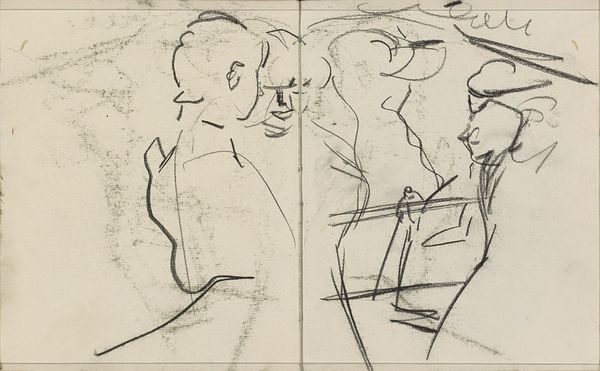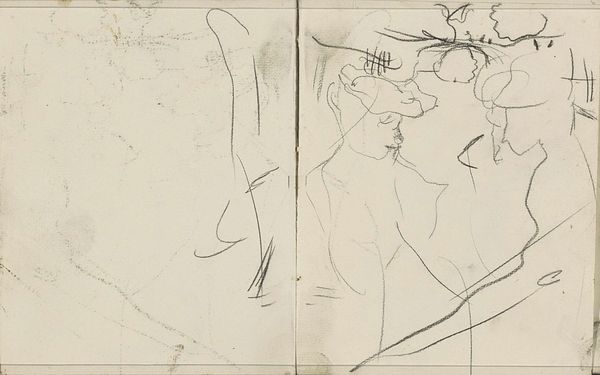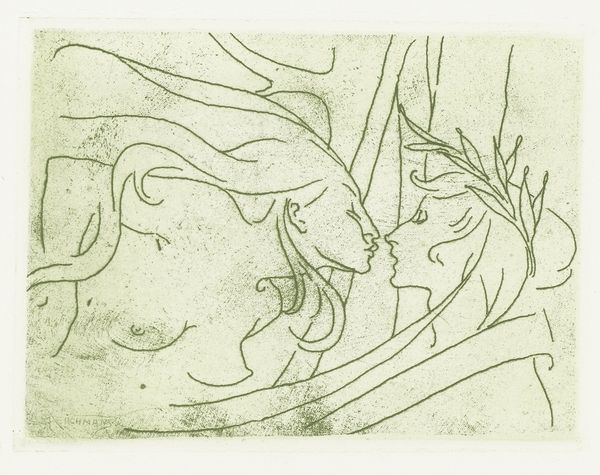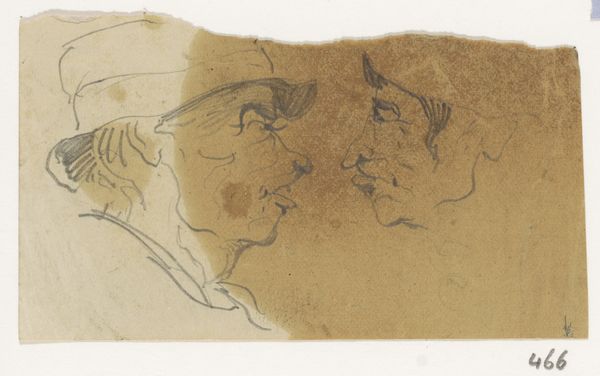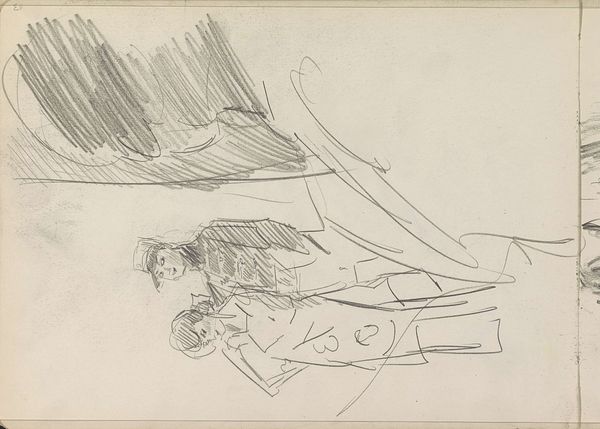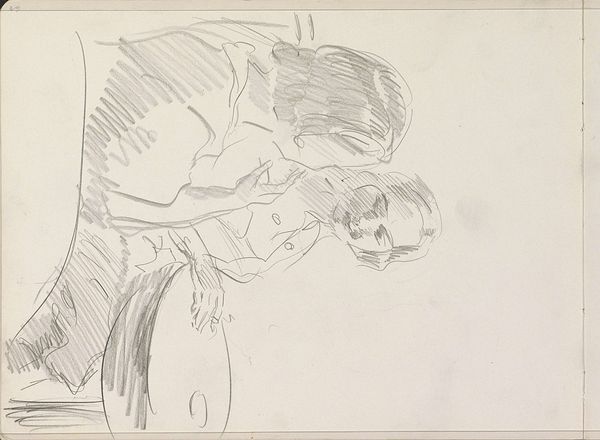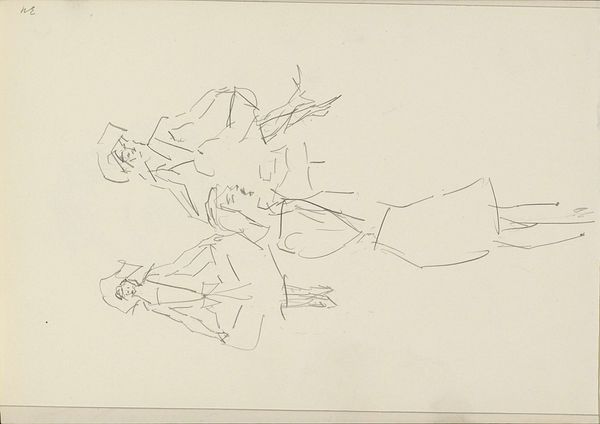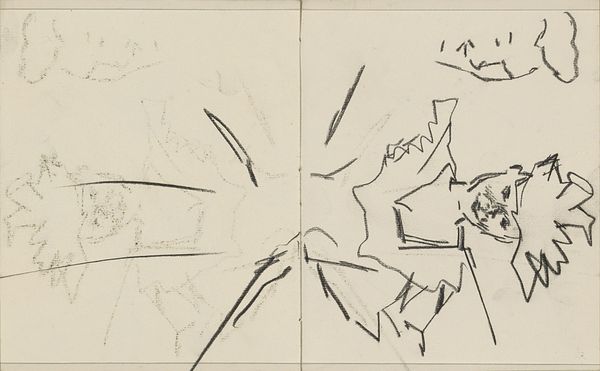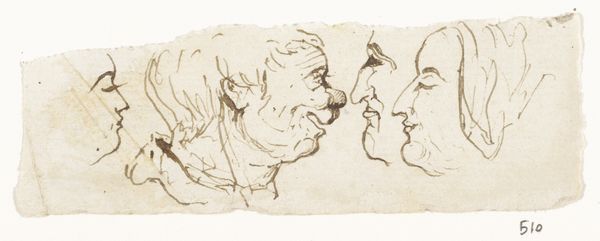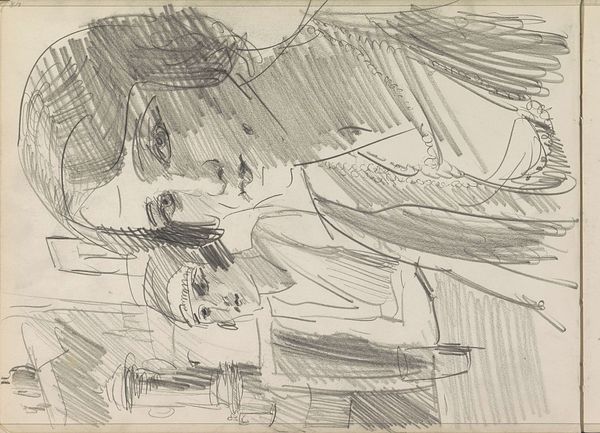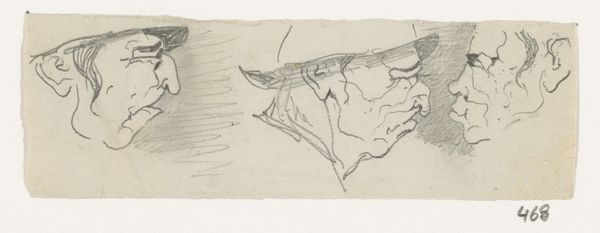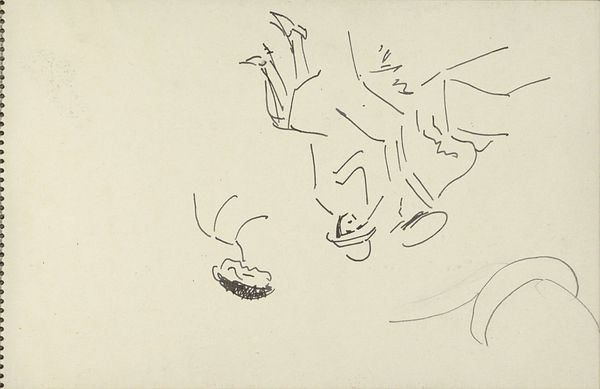
Copyright: Rijks Museum: Open Domain
Curator: Here we have Isaac Israels' drawing, "Groep vrouwen in gesprek," likely created between 1886 and 1903. It's rendered in graphite on paper, a wonderful example of his quick, impressionistic style. Editor: It strikes me immediately as an intimate moment, almost eavesdropping on a private conversation. The sketch-like quality makes it feel incredibly immediate and candid. Curator: Precisely. Israels employs a very economical use of line to capture the forms of the women. Notice the dynamism achieved with relatively few strokes. The composition relies heavily on the interplay between positive and negative space. Editor: I'm interested in who these women might be. Were they friends, family, or perhaps working women whom Israels encountered? The rough style hints at a fleeting encounter, but their interaction holds layers. Curator: That ambiguity is intrinsic to the drawing's character. While details are minimal, the carefully placed lines still suggest volumes, posture and mood. Consider the way he defines the shapes of their hats, creating depth with variations of lines, or that interesting dark spot used for the sash around a waist. Editor: There's a deliberate anonymity that resonates. I wonder if these women might function as symbols of female solidarity and community during this era, subtly acknowledging the vital role women played in social support networks. Curator: One could definitely argue that the focus on a social gathering suggests a reading through the lens of female companionship. Yet, from a purely formal viewpoint, it remains an interesting exercise in depicting three-dimensional figures with minimal tonal modeling. The artist encourages our eyes to complete the figures through suggestion rather than realistic detailing. Editor: The incomplete aspects heighten a sense of raw immediacy, reminding me that Israels existed within the tradition of documenting modern urban life and the New Woman who came with the changing landscape. Curator: Ultimately, what impresses me is Israels' masterful manipulation of the medium. Graphite becomes more than just a tool; it becomes a voice for light, space, and form. Editor: And, in its seeming simplicity, this sketch offers us access to a past brimming with untold stories and women's unheard voices.
Comments
No comments
Be the first to comment and join the conversation on the ultimate creative platform.
